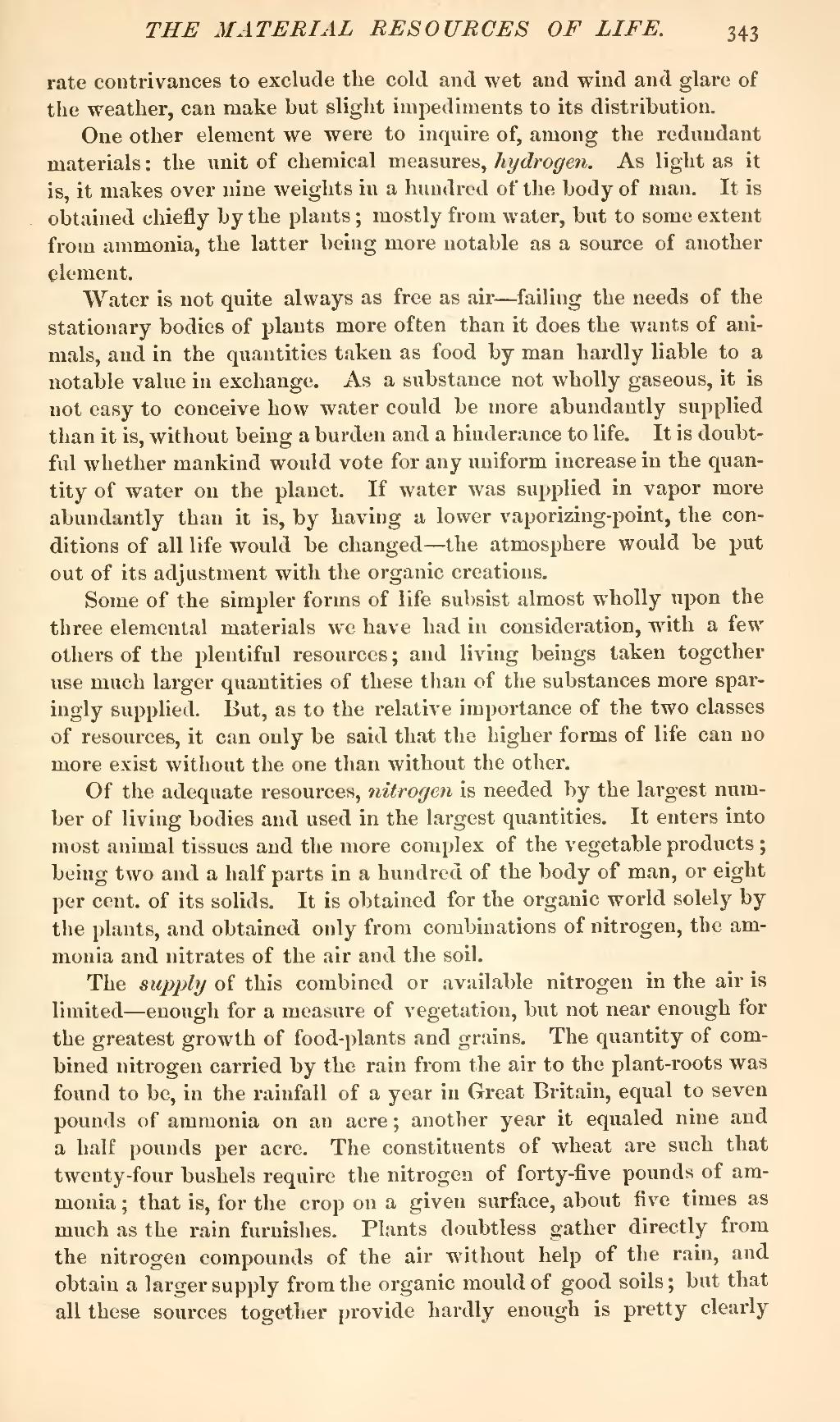rate contrivances to exclude the cold and wet and wind and glare of the weather, can make but slight impediments to its distribution.
One other element we were to inquire of, among the redundant materials: the unit of chemical measures, hydrogen. As light as it is, it makes over nine weights in a hundred of the body of man. It is obtained chiefly by the plants; mostly from water, but to some extent from ammonia, the latter being more notable as a source of another element.
Water is not quite always as free as air—failing the needs of the stationary bodies of plants more often than it does the wants of animals, and in the quantities taken as food by man hardly liable to a notable value in exchange. As a substance not wholly gaseous, it is not easy to conceive how water could be more abundantly supplied than it is, without being a burden and a hinderance to life. It is doubtful whether mankind would vote for any uniform increase in the quantity of water on the planet. If water was supplied in vapor more abundantly than it is, by having a lower vaporizing-point, the conditions of all life would be changed—the atmosphere would be put out of its adjustment with the organic creations.
Some of the simpler forms of life subsist almost wholly upon the three elemental materials we have had in consideration, with a few others of the plentiful resources; and living beings taken together use much larger quantities of these than of the substances more sparingly supplied. But, as to the relative importance of the two classes of resources, it can only be said that the higher forms of life can no more exist without the one than without the other.
Of the adequate resources, nitrogen is needed by the largest number of living bodies and used in the largest quantities. It enters into most animal tissues and the more complex of the vegetable products; being two and a half parts in a hundred of the body of man, or eight per cent, of its solids. It is obtained for the organic world solely by the plants, and obtained only from combinations of nitrogen, the ammonia and nitrates of the air and the soil.
The supply of this combined or available nitrogen in the air is limited—enough for a measure of vegetation, but not near enough for the greatest growth of food-plants and grains. The quantity of combined nitrogen carried by the rain from the air to the plant-roots was found to be, in the rainfall of a year in Great Britain, equal to seven pounds of ammonia on an acre; another year it equaled nine and a half pounds per acre. The constituents of wheat are such that twenty-four bushels require the nitrogen of forty-five pounds of ammonia; that is, for the crop on a given surface, about five times as much as the rain furnishes. Plants doubtless gather directly from the nitrogen compounds of the air without help of the rain, and obtain a larger supply from the organic mould of good soils; but that all these sources together provide hardly enough is pretty clearly
